
La Base #2×49 – Cristina: destruirla como sea


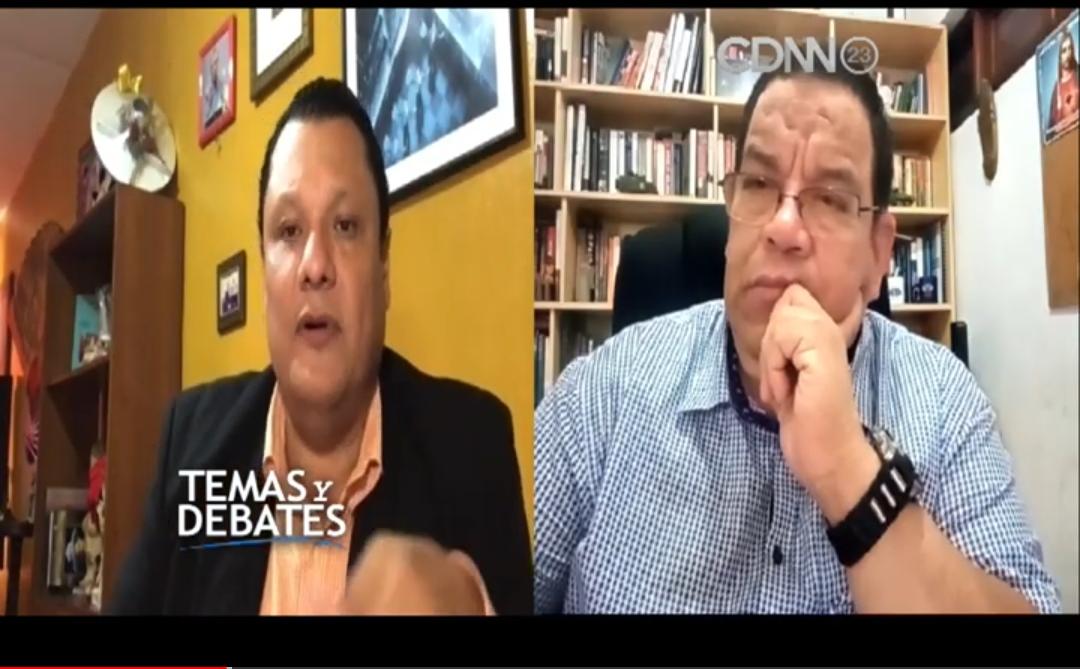
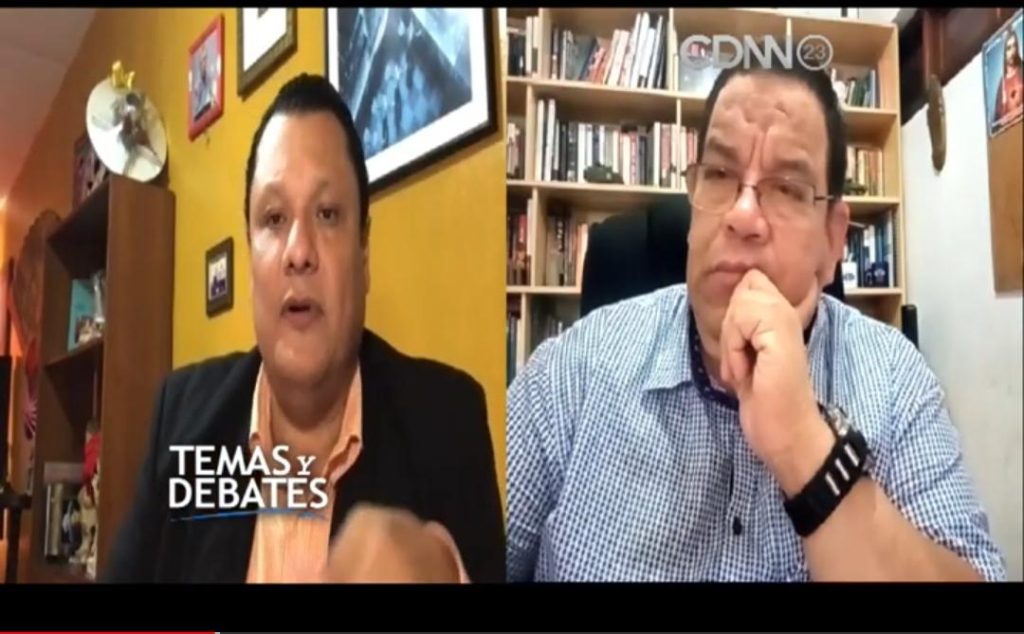

From Wikipedia, the free encyclopedia
Jump to navigationJump to search
| Type | Private |
|---|---|
| Industry | Commodity |
| Founded | 1993 |
| Headquarters | Ocean Financial Centre, Singapore[1] |
| Area served | Worldwide |
| Key people | Jeremy Weir (CEO)[2] |
| Services | Commodity trading/logistics |
| Revenue | |
| Operating income | 1,491,700,000 United States dollar (2018) |
| Net income | |
| Total assets | |
| Total equity | |
| Number of employees | 8,619 (2020) [3] |
| Subsidiaries | Puma EnergyNyrstarGalena Asset ManagementImpala TerminalsNala Renewables |
| Website | trafigura.com |
Trafigura Group Pte. Ltd. is a Singaporean-based Swiss[5] multinational commodity trading company founded in 1993 that trades in base metals and energy.[2][6][7] It is the world’s largest private metals trader and second-largest oil trader[8][9] having built or purchased stakes in pipelines, mines, smelters, ports and storage terminals.[10] The company operates through a complex network of over 100 subsidiaries across the world,[11] with main operating offices in Geneva and Singapore.[12]
Trafigura was formed by Claude Dauphin and Eric de Turckheim in 1993, but quickly split off from a group of companies managed by Marc Rich.[9]
Trafigura has been named or involved in several scandals, particularly the 2006 Ivory Coast toxic waste dump, which left up to 100,000 people with skin rashes, headaches and respiratory problems.[13] The company was also involved in the Iraq Oil-for-Food Scandal.
Trafigura Beheer BV was established as a private group of companies in 1993 by six founding partners: Claude Dauphin, Eric de Turckheim, Graham Sharp, Antonio Cometti, Daniel Posen and Mark Crandall.[14][15]
Initially focused on three regional markets – South America (oil and minerals), Eastern Europe (metals) and Africa (oil) – Trafigura has since diversified and expanded globally.[16]
In November 2013 it was announced that Tory peer and former leader of the House of Lords Baron Strathclyde, Thomas Galbraith would be joining Trafigura as a non-executive director. He had previously stood down from the board of the group’s hedge fund arm following the 2009 controversy over the Côte d’Ivoire incident.[17]
Executive chairman Claude Dauphin and the last remaining founder in an executive position, owned less than 20 per cent of the group’s equity at his death in September 2015, while more than 700 senior managers control the rest.[18]
In 2003 the group established its fund management subsidiary, Galena Asset Management.[19] In 2010, Trafigura bought 8% of Norilsk Nickel.[20]
On 24 May 2007 an explosion occurred in Sløvåg Gulen, Sogn og Fjordane, Norway in a tank owned by Vest Tank [no], that had severe environmental and health consequences for people living nearby. In 2008 the Norwegian Broadcasting Corporation published the 50 min documentary “Dirty Cargo” disclosing what had happened in the small community prior to the explosion. The company Vest Tank was trying to neutralize the same kind of chemical waste that was dumped in Côte d’Ivoire when the explosion occurred. The owner of the waste was Trafigura, on whose behalf Vest Tank was working.[21][22][23] Even so, Norwegian authorities did not prosecute Trafigura and the company was not accused of direct responsibility in the Vest Tank incident. Requests by Norwegian police to interview Trafigura employees were not granted by the company.[24]
In February 2013 Trafigura invested $800 million in the Australian energy market, acquiring more than 250 petrol stations, two oil import terminals and five fuel depots in three separate acquisitions by its subsidiary Puma Energy.[25][26] At the time, there was interest in Australia among energy traders due to a combination of rising demand and the closure of outdated, high-cost refineries.[27] The same month, Trafigura joint venture DT Group partnered with Angola’s state oil firm Sonangol to form a new company, Sonaci DT Pte Ltd, to market Angola’s new liquefied natural gas (LNG) exports.[28]
In March 2013, Trafigura announced a deal with South Sudan to export Dar Blend crude oil from Port Sudan.[29] The agreement with South Sudan was a continuation of Trafigura’s longtime presence in the Sudanese oil market and followed the resolution of a legal dispute between Sudan and South Sudan over transit fees and oil revenues.[30]
In October 2013 Trafigura secured USD 1.5 billion in financing for an upfront loan to Russian oil producer OAO Rosneft. The prepayment facility, which provided a loan for advance payment for more than 10 million tons of products over five years, was the largest such deal ever completed by Trafigura.[31]
A month later Trafigura signed an agreement with Dallas-based pipeline operator Energy Transfer Partners to transport crude oil and condensate via a partially converted 82-mile pipeline from the Eagle Ford oil field in McMullen County, Texas, to Trafigura’s deep-water terminal at Corpus Christi Bay, near the Gulf of Mexico.[32][33]
In February 2014 Trafigura signed an agreement to acquire a 30% equity stake in the Jinchuan Group‘s newly established 400,000 tonnes-per-year copper smelter in Fangchengang, China.[34]
In July 2014 Trafigura launched Lykos, an online platform in India to sell metals to small and medium-sized manufacturers in the country.[35]
In September 2014 Trafigura completed the $860 million sale of an 80% stake in a Corpus Christi Texas oil storage terminal to Buckeye Partners LP.[10]
In June 2015 Trafigura announced a 50:50 joint venture with Abu Dhabi investment company Mubadala Development Company—to invest in base metals mining. As part of the agreement Mubadala also acquired 50% of Trafigura’s Minas de Aguas Teñidas [es] (Matsa) mining operation, which owns three mines in southern Spain that produce copper, zinc and lead concentrate ores.[36] This followed a doubling of processing capacity at the company’s MATSA mining operation in Andalusia, Spain, where two new satellite mines are also being developed.[37]
In August 2015 it was reported that Trafigura subsidiary Impala Terminals is investing USD1 billion in Colombia to develop a new inland road, rail and river network connecting major coastal ports with Colombia’s industrial heartland. The Magdalena River, which runs between Barrancabermeja inland and Barranquilla on the Atlantic coast, will allow transportation of crude oil and petroleum products, dry bulk, containerised and general cargo to and from inland Colombia.[38]
In October 2016 it was announced that Trafigura and Russian investment group United Capital Partners would each take a 24 per cent stake in Essar Oil, which owns India’s second-biggest private refinery in the western state of Gujarat as well as a network of 2,700 filling stations.[39]
Trafigura was criticised in December 2022 for handing out “more than $1.7bn (£1.4bn) to its top traders and shareholders after the energy crisis, fuelled by the war in Ukraine”.[40]
In 2008, the company had equity of more than $2 billion and a turnover of $73 billion that generated $440 million of profit.[9]
In March 2010 Trafigura made its first venture into capital markets, issuing Euro 400m ($539m) in five-year Eurobonds.[41]
The following month Trafigura listed its first perpetual subordinated bond on the Singapore Exchange (SGX) at a fixed rate of 7.625%.[42] The issuance raised $500m in long-term capital that is treated as equity by international accounting rules, leaving existing shareholders undiluted.[43][44]
By 2011, its revenue had increased to $121.5 billion and its profits to $1.11 billion,[45] with profits falling 11% in 2012.[46]
In 2013 as a consequence of the Singapore listing, Trafigura released financial statements for the first time, reporting Q1 profits of $216.1 million – up 3.2 per cent on the previous year. Revenue grew 7.9 per cent to USD 31.2 billion.[47]
In March 2016, Trafigura closed a 46 million yen ($413 million) three-year loan, doubling the size of its 2014 Samurai loan.[48]
Trafigura operates 65 offices in 36 countries.[49]
Trafigura is the third-largest physical commodities trading group in the world behind Vitol and Glencore.[50] Trafigura sources, stores, blends and transports raw materials including oil, refined petroleum products and non-ferrous metals (iron ore and coal).[16][51]
Trade in non-ferrous and bulk commodities – mainly copper, lead and zinc concentrate, alumina, refined metals of copper, lead, zinc and aluminium as well as the iron ore and coal trading books – made up 13% of Trafigura’s overall trading turnover in 2016. The group traded 8.2 million tonnes of non-ferrous metal concentrates and 6.6 million tonnes of non-ferrous refined metal during the year.[52] Overall volume across metals and minerals increased by 13% from 2015 to 59 million tonnes.[53]
Trading volumes in oil and petroleum products totalled 4.3 million barrels a day in 2016, up 42% from 3 million barrels a day in 2015.[54]
In October 2016 Trafigura sold five medium-range tankers to China’s Bank of Communications Financial Leasing Co, marking its exit from owning product tankers.[55]
In support of its arbitrage-based business model, Trafigura ensures a degree of control over supply, storage and logistics through industrial subsidiaries: oil storage and distribution business Puma Energy, in which Trafigura holds a 49% interest.[56]
Trafigura is involved in paper trading through its subsidiary Galena Asset Management, which was set up in 2003 to invest in commodity funds.[16][57]
The company was named in the Iraq Oil-for-Food Scandal in connection with a Liberian-registered turbine tanker, Essex, that had UN approval to load Iraqi crude at Iraq’s main export terminal at Mina al-Bakr. The tanker was chartered by Trafigura Beheer BV. According to her captain, Theofanis Chiladakis, the Essex was ‘topped off’ at least twice, with a total of 272,000 barrels of crude, after UN monitors had signed off the cargo.[58] This was on 13 May and 27 August 2001. Elf Aquitaine employees had first talked about this scheme in February 1998.[59]
In February 2013, Trafigura Maritime Ventures Limited—the Malta based subsidiary of Trafigura Maritime Logistics PTE Limited based in Singapore—and the oil trading arm of Total became involved in an oil price fixing controversy that led them to both be barred from the tendering process at the Enemalta oil purchasing board.[60] Between 1999 and 2012, Enemalta paid the two companies $3.2 billion for oil, accounting for 70% of the oil purchased by Enemalta in that time period.[61]
In May 2015, the Financial Times reported that Trafigura has become a major exporter for Rosneft crude oil from Russia despite sanctions. The company has seen a surge for such exports, almost 9 million barrels of crude in April 2015, mostly for Asian markets, financed by pre-pay oil deals in form of short term loans that are not subject to sanctions. While some commodity traders have been cautious dealing with sanctioned companies, Trafigura, which works with a number of global banks financing the oil deals, has found a reliable partner in Rosneft for global business.[62]
In 2016, the Swiss non-governmental organisation Public Eye published the results of its investigation showing how traders – especially Trafigura – prepare and sell “African quality” toxic fuel to Africa, containing high levels of sulphur that causes particulate matter pollution, damaging human health.[63][64][65] Subsequently, Ghana reduced the maximum limit of sulphur in imported diesel fuel from 3000 to 50 parts per million, from March 2017 (the European limit is 10 parts per million).[65][66] Trafigura stated that the report was “misconceived” as they only supply legal fuel[64] and that it is up to governments to set fuel specifications.[67]
In November 2018 Global Witness asked the UK’s Serious Fraud Office and the US authorities to investigate alleged ties between the Brazilian Operation Car Wash scandal and three oil trading companies, one of which was Trafigura.[68] Trafigura is keeping the allegations “under review” and affirms that it “is taking the allegations … seriously”,[69] but has denied that its management knew that payments would be used to make improper payments to employees of Petrobras.[70]
Some 18 months later, in May 2020, the Guardian reported Trafigura was under investigation by the US Commodity Futures Trading Commission (CFTC) for alleged corruption and market manipulation relating to oil trading. Subpoenas demand information going back at least four years relating to “manipulation and corruption involving oil products and trading”. It was unclear if the CFTC investigation was related to Operation Car Wash.[71]
Main article: 2006 Ivory Coast toxic waste dump
The 2006 Ivory Coast toxic waste dump was a health crisis in Ivory Coast in which the Probo Koala, a ship registered in Panama and chartered by Trafigura, hired a local contractor to offload waste in Abidjan after refusing to pay a €1,000 per cubic metre surcharge imposed by Amsterdam Port Services to discourage waste disposal in the Netherlands.[72] The local contractor, Tommy, improperly dumped the waste materials at as many as 12 sites in and around the city of Abidjan in August 2006. The gas caused by the release of these chemicals is blamed by the UN and the government of Ivory Coast for the deaths of 17 and the injury of over 30,000 Ivorians, with injuries that ranged from mild headaches to severe burns of skin and lungs. Almost 100,000 Ivorians sought medical attention after prime minister Charles Konan Banny offered free medical care in Abidjan’s hospitals to the city’s residents.[73]
Trafigura maintains that the substance dumped consisted of “slops”, or waste water from washing the Probo Koala’s tanks. An inquiry in the Netherlands, in late 2006, confirmed the substance to consist of more than 500 tonnes of a mix of fuel, hydrogen sulfide, and sodium hydroxide, known as caustic soda. After the start of the health crisis in Abidjan, the Probo Koala arrived at the port of Paldiski in Estonia where Trafigura permitted Dutch police onboard to conduct an investigation.[72][74][75]
Trafigura denied any waste was transported from the Netherlands, saying that the substances contained only tiny amounts of hydrogen sulfide, and that the company did not know the substance was to be disposed of improperly. Trafigura officials, including Claude Dauphin and the company’s West Africa regional director, traveled to Abidjan to assist in the cleanup effort but were arrested and imprisoned by the Ivorian government. While its executives were being held, the company agreed to pay US$198 million for cleanup to the Ivorian government without admitting wrongdoing, and the Ivorian government pledged not to prosecute the company.[76] Dauphin and his fellow executives were released following the settlement.[77]
In 2008 a civil lawsuit in London was launched by almost 30,000 Ivorians against Trafigura. In May 2009 Trafigura announced it would sue the BBC for libel after its Newsnight program alleged the company had knowingly sought to cover up its role in the incident. In September 2009 The Guardian obtained and published internal Trafigura emails showing that the traders responsible knew how dangerous the chemicals were. Shortly afterwards Trafigura agreed to a settlement of £30 million (US$42.4 million) to settle the suit.[78] In 2010 a Dutch court found Trafigura guilty of illegally exporting toxic waste from Amsterdam.[79]
Some of Trafigura’s major international units include:

¿Qué intereses se esconden tras la destitución y detención del presidente Pedro Castillo en Perú? ¿Qué tiene que ver con los enfrentamientos en el Este de Europa entre occidente y oriente? ¿Cómo influyen Estados Unidos y Europa en su puja por contener a Rusia y China en los conflictos como el de Perú y Argentina? Conversamos con Manuel Espinoza Jarquín, del Centro Regional de Estudios Internacionales, CREI, sobre el acomodo y reacomodo de influencias geoestratégicas en el planeta y su influencia en el continente americano, en Sumando Vigores, por ExtraPlus.

Latino América en el marco de las Operaciones Geopolíticas de Política Exterior (OGPE) de las Potencias de Turno.
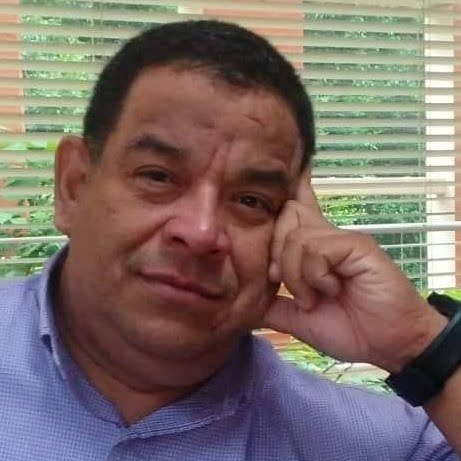
Por décadas la SUPREMACÍA OCCIDENTAL GLOBAL, basada en su PODERIO MULTIDIMENSIONAL era el factor número uno del análisis sobre PODER GLOBAL en las relaciones internacionales. En 1991, tras la desaparición de la URSS, (HEARTLAND en términos teóricos geopolíticos) ninguna otra zona de influencia geopolítica podía competir en términos económicos, financieros, tecnológicos, culturales y militares contra occidente. Es sobre la base de ese factor multidimensional, que las formulaciones tácticas y estratégicas, las acciones implementadas y resultados, de las OPERACIONES GEOPOLÍTICAS DE POLÍTICA EXTERIOR siempre han sido analizadas.
En realidad, son muy pocos en el planeta, los centros analíticos dedicados al análisis de este tipo de operaciones geopolíticas (que incluyen las geoeconómicas y geo – culturales). De hecho, este es un nivel de análisis estratégico y solo países potencias se dan el gusto de poder realizarlos por su complejidad y capacidad de recursos humanos dispuesto a esta labor. En realidad, este tipo de centros es la segunda tipología, ya que el primer tipo está dedicado a la planificación e implementación de las operaciones geopolíticas de las potencias.
Este primer tipo de centros de planificación y ejecución, se caracterizan por ser un serio entramado de agencias e instituciones, publicas y privadas, ligadas al accionar posterior secreto de los servicios que realizan las operaciones de inteligencia de política exterior a favor de sus Estados potencia y en general de sus zonas geo- culturales de influencia. La bibliografía o fuentes de información abierta sobre este tipo de operaciones no son abundantes y apenas podemos conocer a través de lo que por separado se escribe sobre cada uno de los elementos, que caracterizan el factor multidimensional.
De lo que, si se debe de estar claro, es que los cuatro niveles principales operacionales de la (OGPE) de las potencias, están dirigidos a los países por separados, regiones, continentes y zonas de influencia geopolíticas, que como resultado debe de lograrse la penetración a las zonas geográficas y culturales, así como su debilitamiento y control a largo plazo. De ahí, que la doctrina Monroe y su vigencia actual en la visión de política exterior USA, debe enfocarse entre los objetivos fundamentales de la OGPE- USA hacia nuestro continente.
Sin embargo, podemos entender que desde 1991 a la fecha, 31 años han transcurrido y el panorama sobre el BALANCE DE FUERZAS GLOBALES a favor de occidente (constante situacional “A”), ha sufrido serias fracturas desde el surgimiento de China como segunda potencia (Constante situacional “B”) y hoy día, sobre todo, tras el inicio y conducción de diez meses de la Operación Especial Militar (OEM) rusa en Ucrania (constante situacional “C”).
Está más que claro, que, la SUPREMACÍA OCCIDENTAL GLOBAL, producto del Desbalance de Poder Occidental (Constante situacional “A-1”) ante Euro-Asia (zona de influencia geopolítica) afecta su andamiaje de hegemonía, control y dominio sobre L.A y El Caribe.
Hemos visto como la GEOESTRATEGIA GLOBAL norteamericana, con la ayuda del Occidente Colectivo, a la luz de sus operaciones geopolíticas por ejemplo en África (Libia), Medio Oriente (Iraq, Afganistán, Siria, Irán, Yemen), Asia Central (Kazajistán, Armenia, Azerbaizhan), Europa (Ucraina) han sufrido un serio colapso significativo en términos político-militares, económicos energéticos y culturales al aparecer nuevos factores de poderío multidimensional a favor de China y Rusia.
Como resultado anterior, el factor militar situacional coyuntural global se ha activado a niveles de pre guerra entre Rusia y la OTAN y no necesariamente en términos de guerra convencional, sino nuclear táctico. Pensar, que occidente, no tenía planes e intenciones a estos niveles es entonces no entender la planificación geoestratégica de las (OGPE) en sus cuatro niveles. La sorpresa aquí es Rusia en función de contrarrestar las operaciones geopolíticas del Occidente Colectivo a nivel global, sobre todo a partir del 24 de febrero de este año con el inicio de la OEM en Ucraina.
De tal manera que, la OGPE – USA contra Rusia, con la utilización de Europa como tablero, la OTAN como reina y Ucraina como peón de ajedrez, está llegando a momentos de colapso y desarticulación en esta etapa con la incapacidad de destruir en varios ejes de ataque a Rusia (Gobierno- Población, por el desgaste económico y militar y su alianza internacional). Muy al contrario de lo que asegura el oligopolio mediático global occidental, Rusia no solo está venciendo en términos militares a Ucraina y al Occidente Colectivo.
Rusia junto a China están generando nuevas “constantes situacionales” como la FRACTURA DE LA ELITE ANGLOSAJONA – JUDIA y la ELITE EUROPEA (constante situacional “A- 1.1”). El DEBILITAMIENTO DE LA ALIANZA DE LA ELITE OCCIDENTAL CON LA ELITE RUSA” (constante situacional “A.1.2”). Una EUROPA UNIDA PERO DISTANTE A LA ELITE ANGLOSAJONA (constante situacional “A.3”). Una EUROPA DIVIDIDA CON ALEMANIA, FRANCIA E ITALIA MÁS INCLINADA AL FORTALECIMIENTO DE EURO- ASIA. (Constante situacional “A1.4”).
Son estas constantes situacionales principales objetivos de la OGPE de Rusia y China no solo hacia Europa, sino hacia el Occidente Colectivo. Por eso, más de 500 años de influencia occidental está siendo enfrentada por la TENDENCIA DEL CHOQUE ENTRE BLOQUES GEOPOLÍTICOS, GEOECONÓMICOS Y GEO CULTURALES MÁS, QUE EL CHOQUE ENTRE GRUPO DE ALIANZA ENTRE PAISES. (constante situacional “D”)
EL CHOQUE GEO CULTURAL (constante situacional “D-3”), es uno de los factores de mayor movilidad, que tambien están influyendo en el resquebrajamiento del orden unipolar y la gestación de uno de carácter multipolar. Este choque civilizatorio marca una constante a largo plazo y asi se debe de ver no solo en el plano euro – asiático con su diversidad cultural, sino tambien en el plano civilizatorio latinoamericano y caribeño.
Tal como hemos podido observar en el plano europeo y las diferentes constantes situacionales, que se derivan a largo plazo en su relación de unidad de las élites occidentales, producto del surgimiento de China y el resurgimiento de Rusia en la arena internacional como un centro de poder geopolítico activo, (constantes situacionales “A” y “B”) de igual manera están ejerciendo su influencia gradual y a largo plazo en la unidad de nuestro continente hacia el Occidente Colectivo.
Están más activas, que nunca. Tienen resultados tangibles según los planes de estas de cada potencia. El enfrentamiento de L. A y El Caribe contra los EE. UU. (constante situacional “E”) y el CUADRO DE ACCESO AL PODER GUBERNAMENTAL DE LA IZQUIERDA LATINOAMÉRICA (constate situacional “E-1”) por muy diverso que presenta la izquierda continental en el marco de su unidad, representa por lo menos no solo un mapa añorado desde Bolívar, Martí, Sandino, Fidel, el CHE y Daniel: o desde el Comintern, Lennin, Trotsky y Stalin. Tambien destaca una etapa de traslape y desarrollo a largo plazo en su lucha por la segunda independencia.
Brasil y México reclaman espacios propios dentro del continente. Cuba, Venezuela, Nicaragua y Bolivia marcan el enfrentamiento directo antiimperialista, mientras en otros países (Argentina, Chile, Perú, Colombia, Ecuador, Honduras) apenas la izquierda llega al gobierno con permiso de la Casa Blanca como parte de su OGPE con una agenda de des-unidad continental y de fractura civilizatoria permanente por diversas formas.
El progresismo, al igual que otras, que le anteceden como la instalación de dictaduras militares, la red de ONG, y la Sociedad Civil, el evangelismo, la penetración a la izquierda continental es una de las ultimas OGPE –USA en L.A y El Caribe, tiene por objetivo el control de la derecha global ultraconservadora en el continente, que amenaza a la instalación de dictaduras de derechas con enfoques ultra religiosos y valores fascistas, bajo la sombra de una izquierda vacía, sin avances sustanciales en la destrucción del sistema de poder imperial. Incapaz de generar orden social y amenaza a la libertad y democracia.
En general L.A y El Caribe siguen presentando serios factores de des-unidad de criterios y acciones, mientras la derecha se fortalece en una alianza, que no necesita criticarse entre sí, sino más bien que se une en el control del poder a favor del imperio. El bolsonarismo, el uribismo, el macrismo, el fujimorismo, los Fox y hasta el pinochetismo estan a la vuelta de la esquina mientras las izquierdas como estas se quieran vestir no realicen resultados tangibles en su estancia en el gobierno. En solo este mes se sentenció a Cristina Kishner en Argentina y el Presidente de Perú, Pedro Castillo fue destituido por su parlamento, demostrando la fragilidad de poder de la “izquierda light”.
Pero aun con todo, las potencias luchan en el plano latinoamericano y caribeño tanto por su influencia directa como indirecta, según la coyuntura global, que asegura un serio declive occidental global. El choque de las constantes situacionales, arriba presentadas en el marco del poderío multidimensional de las potencias enfrentadas en la actual coyuntura debe de darnos un mejor visón sobre nuestro hemisferio a largo plazo.
A medida que el enfrentamiento del eje ruso-chino contra el Occidente Colectivo a largo plazo se encrudezca y agudice, el comportamiento de nuestro continente producto de la ebullición político – ideológico y socio económico asegura una dinámica de cambios profundos que lo puede convertir en una zona de influencia geopolítica activa con avances en su segunda dependencia o en su supeditación al Occidente Colectivo. Sólo la lucha organizada y en alianzas de los pueblos pueden alcanzar un grado mayor de soberanía.
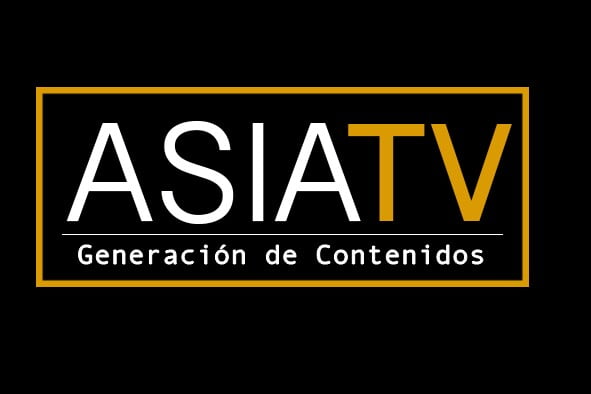
El ocaso de un Imperio viene precedido por signos que vaticinan un colapso. Si sabemos observar podemos ver esas señales, la caída es un hecho, solo no sabemos cuándo. Análisis de Marcelo Ramírez

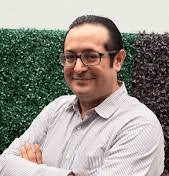

El Canciller ruso, Serguéi Lavrov, recientemente declaró en un Foro Internacional sobre geopolítica y economía que la globalización bajo el método estadounidense ha finalizado, siendo sustituido progresivamente por organizaciones que brindan una alternativa diferente.